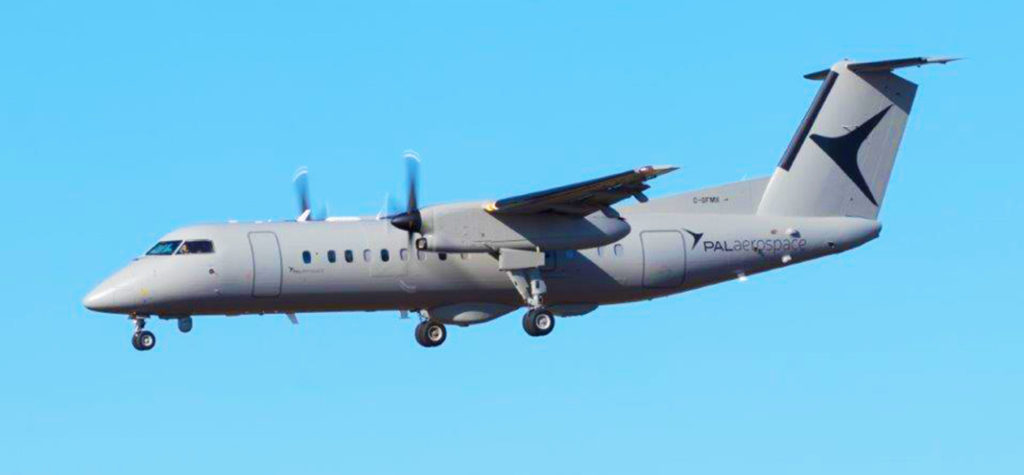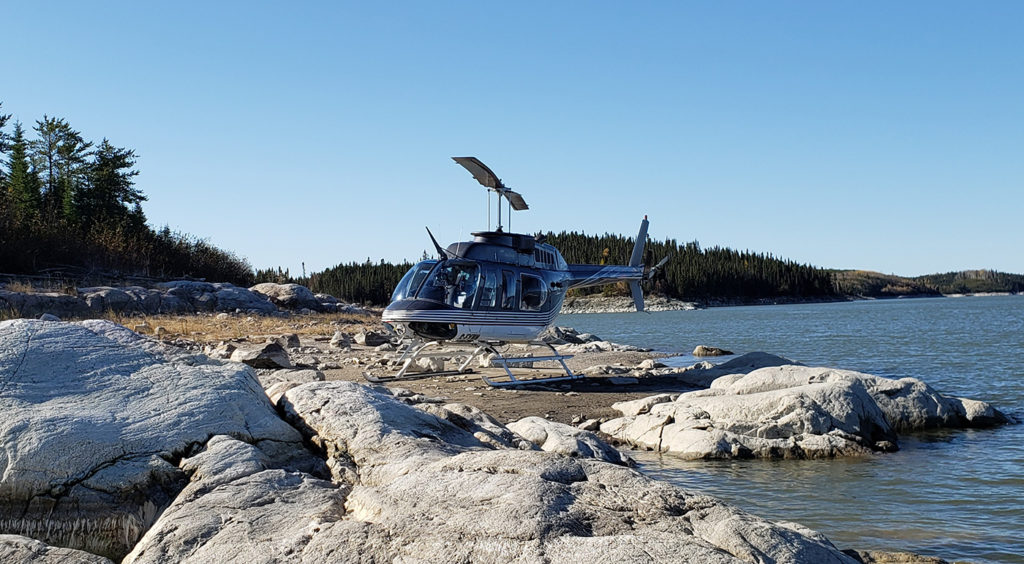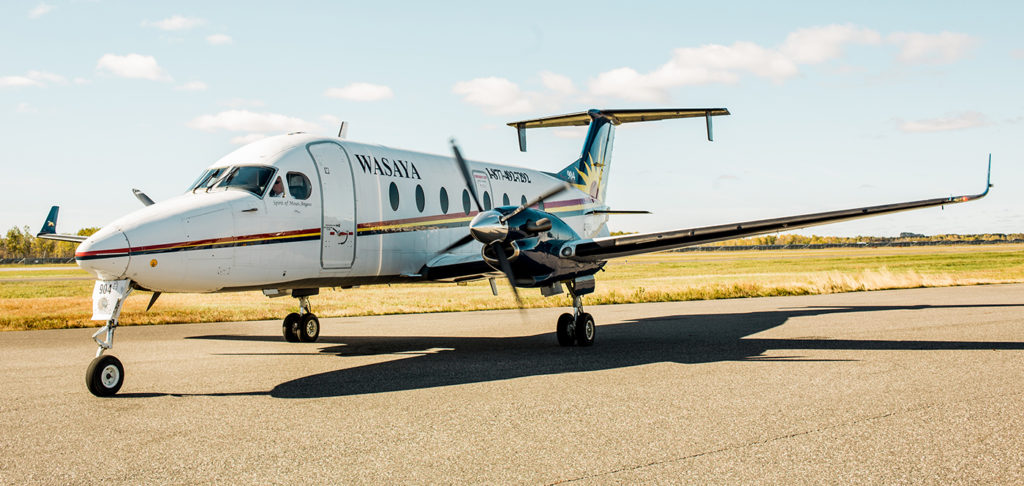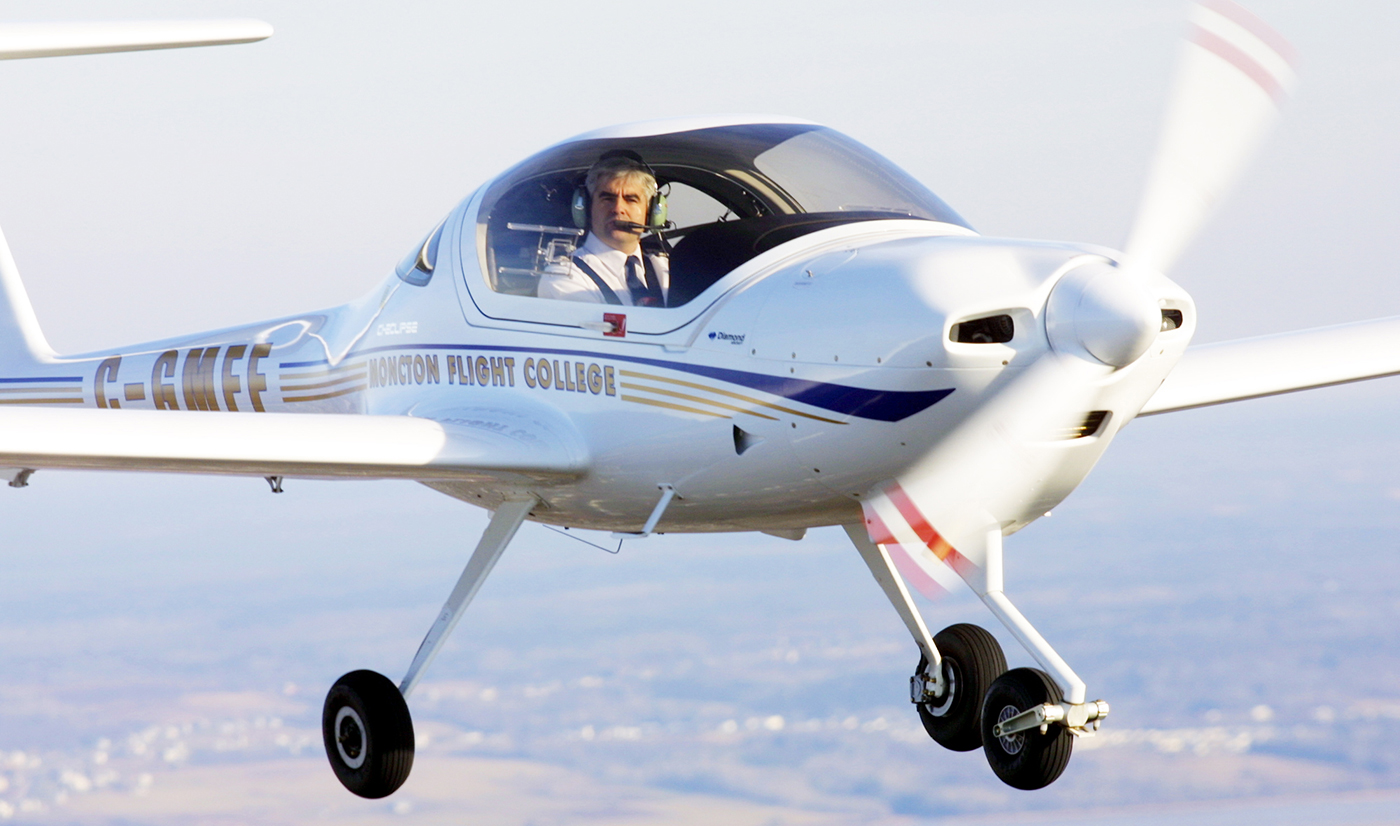Estimated reading time 11 minutes, 33 seconds.
During the past 40 years, intrepid investors in the Canadian airline industry have often experienced severe turbulence. Canada 3000, Canadian Airlines International, Eastern Provincial Airways, Nordair, Pacific Western Airlines, Royal Airlines, Time Air, Transair and Wardair disappeared from both Canadian skies and stock exchanges. With the recent privatization of Helijet International, the acquisition of WestJet Airlines by Onex Corporation and the pending purchase of Air Transat by Air Canada, there are now only a few publicly-traded Canadian carriers. The three largest, based on market capitalization, are Air Canada, Cargojet Airways and Chorus Aviation — the parent of Jazz and Voyageur.

There is, however, another company that provides investors with an opportunity to participate in a diverse range of aviation activities across Canada.
Exchange Income Corporation (EIC) of Winnipeg, Man., has assembled a portfolio of companies that provide scheduled air services; medical evacuation charters; maritime surveillance sorties; aircraft maintenance, repair and overhaul; regional airliner leasing; and pilot training. While EIC is not a household name like Air Canada, it is an intriguing venture that deserves a closer look.
In September 2002, Duncan Jessiman and Michael Pyle created The Exchange Industrial Group Inc. in Winnipeg. It went public in May 2004 as the Exchange Industrial Income Fund and adopted its current name in July 2009. Since its inception, the company’s mission has been to acquire attractive businesses that can provide income-oriented investors with regular dividend payments. The company adheres to five main principles to identify suitable targets:
- Disciplined accretive acquisitions – each addition to the portfolio must be able to contribute to the corporation’s earnings, net of acquisition-related expenses, immediately;
- Experienced and proven management – ideally, the management team that has been responsible for the new addition’s success remains in place to provide continuity with customers and employees. Besides the company’s founder, there are other capable managers;
- Strong balance sheet – revenue growth and attractive operating margins are important, but retaining a prudently levered balance sheet is mandatory;
- Invest in organic growth opportunities – select companies that serve markets with growing demand; and
- Reward its stakeholders – pay a dividend to shareholders and provide attractive compensation to its employees.

In addition, EIC’s management team looks for companies that provide essential services or products, are leaders in markets that are relatively non-cyclical and have barriers to entry, have demonstrated that they are consistently low-cost producers, and can be purchased at a reasonable price. Turnaround situations that require capital, new management and/or positive external developments in order to be profitable are never considered.
Today, EIC is a holding company with subsidiaries that operate in two business segments: aerospace and aviation as well as manufacturing.
The manufacturing group includes eight companies that produce a wide array of items including precision-machined components; pressure washers; custom tanks for the pharmaceutical, food, beverage and petrochemical industries; communications towers and sophisticated window systems for high-rise residential developments. During 2019, this group represented approximately 27 per cent of EIC’s $1.34 billion of revenues.
The aerospace and aviation group generated roughly 73 per cent of EIC’s top line last year and about 84 per cent of its operating income. Here are brief descriptions of the group’s nine companies.

Perimeter Aviation in Winnipeg, Man., acquired in May 2004
Founded in 1960 as Perimeter Flying Associates, it grew from a flying school into a corporate charter operator with a Beech Aircraft dealership. Its first exposure to scheduled flying came in 1976, when it took over a number of Transair’s routes with a pair of Twin Otters.
Perimeter’s current fleet of 42 aircraft includes 33 Metros, three Dash 8-300s, five Dash 8-100s and one Merlin IIIA. They are used on scheduled services between 23 points within Manitoba and Northwestern Ontario, cargo and corporate charters, and on air ambulance missions. Many of the communities served by Perimeter are isolated and not accessible by ground transportation for most of the year. As a result, the carrier makes a significant contribution to the region’s economy and the quality of life of its inhabitants.
Keewatin Air in Winnipeg, Man., acquired in July 2005
Founded in 1971 at Rankin Inlet, Nunavut, as a charter carrier, the company has grown significantly during the past 49 years. It currently operates a fleet of 22 aircraft, including 17 King Air 200/B200s, four Citation V/Ultras and one Pilatus PC-12. While it continues to fly charters, its primary role is related to air ambulance services. These specially equipped aircraft typically fly more than 1,500 passengers over 2.3 million medevac miles annually. With bases in Manitoba (Winnipeg, Churchill and Thompson), Nunavut (Rankin Inlet, Cambridge Bay, Iqaluit and Igloolik) and the Northwest Territories (Yellowknife), the company’s operations cover a wide area of Canada’s sub-arctic region.

Calm Air International in Winnipeg, Man., acquired in April 2009
Founded in 1962 at Stony Rapids, Sask., as a charter outfit serving fishing camps and remote communities, the operation grew into a scheduled carrier when it, too, acquired route authorities and Twin Otters from Transair in 1976. It later went on to add larger aircraft including Hawker Siddeley HS-748s and Douglas DC-4s for its work in supporting natural resource development. Today, its rationalized fleet consists of a dozen aircraft including seven ATR42s and five ATR72s. They operate a scheduled network that includes six communities in Manitoba and eight in Nunavut. Corporate charters for cargo and/or passengers are also performed.
Bearskin Lake Air Service in Sioux Lake, Ont., acquired in January 2011
Founded in 1963 at Bearskin Lake, Ont., it began operating charters with a pair of float-equipped Cessna 180s. In 1977, it became a scheduled carrier when it initiated the Sioux Lookout – Big Trout Lake route. In 1991, it acquired its first two Fairchild Metros and used them to introduce scheduled flights between Northwestern Ontario’s largest cities, Thunder Bay and Sudbury. Today, “Bearskin Airlines” is a division of Perimeter Aviation and uses 10 of its parent’s Metros to serve a scheduled network that connects Winnipeg with 10 Northwestern Ontario communities.

Custom Helicopters in St. Andrews, Man., acquired in February 2012
Founded in 1977, its fleet has grown to 24 aircraft. These include eight Bell JetRangers, six Bell LongRangers, three Bell 205As, six Airbus AS350Bs and one Airbus EC135. The wide range of services performed by the company includes support for petroleum and mineral exploration, construction, emergency medical services, search and rescue, tourism, wildlife surveys, corporate transportation, aerial photography and military support.
Regional One in Miami, Fla., acquired in April 2013
Founded in 2004, the company purchases, sells and leases regional aircraft to carriers around the globe. Its portfolio includes turboprop and jet airliners, as well as associated rotables. In February 2019, Regional One established a joint venture with Skywest of St. George, Utah, to buy, sell and lease out General Electric CF34 turbofan engines.
Provincial Aerospace in St. John’s, N.L., acquired in January 2015
Founded in 1972, it began as a flight training and charter operator named Aztec Aviation. It became Atlantic Airways in 1983, then Provincial Airlines in 1989. In addition to its scheduled services within Newfoundland and Labrador, as well as Nova Scotia, it began flying iceberg patrols with specially modified aircraft in 1986. In 1996, it established a subsidiary to design and outfit aircraft for maritime surveillance work. Today, the company operates two distinct businesses. PAL Aerospace produces and operates special mission aircraft for governments, militaries and corporations that perform border patrol, intelligence gathering, sea lane monitoring and wildlife survey duties. It also operates corporate jets and turboprops for private clients. The PAL Aerospace fleet totals 15 aircraft. The second unit, PAL Airlines, operates a scheduled network that connects 28 communities within Newfoundland and Labrador, New Brunswick, Nova Scotia and Quebec (between Montreal and St. John’s). Its fleet of 20 aircraft includes two Dash 8-100s, seven Dash 8-300s, nine Twin Otters and two Beech 1900Ds.

CANLink Aviation (operating as Moncton Flight Centre) in Dieppe, N.B., acquired in February 2018
Founded in 1929 as the Moncton Flying Club, the company has a storied history that includes being a member of the British Commonwealth Air Training Plan during the Second World War. Today, it is the largest Canadian flight school with capacity to train more than 250 students at any given time. Some of its courses include private and commercial pilot licences, an integrated commercial pilot course, as well as programs for multi-engine and instrument ratings. The school operates at two locations: Dieppe (Moncton) and Lincoln (Fredericton) in New Brunswick. Its current fleet of 57 aircraft includes 43 Diamond Eclipses, eight Piper Seminoles, three King Air C90As and three Cessna Skyhawks.
Wasaya Airways in Thunder Bay, Ont., acquired in April 2018 (50.99% owned)
Founded in 1989, the company began as a charter operator at Pickle Lake, Ont. It began scheduled services in 1995 and today serves 24 communities in Northwestern Ontario. Its fleet of 20 aircraft includes five Dash 8-100s, three Hawker Siddeley HS-748s, six Beech 1900Ds, three Pilatus PC-12s and three Cessna 208B Grand Caravans.
During the past 16 years, Exchange Income Corporation has quietly assembled an impressive array of aviation enterprises that operate more than 200 aircraft across Canada. Seven of the nine have been active for more than 40 years, a testament to the strength of their business models. What might be expected going forward? Given that the company’s strategy is to grow both internally and externally, we should expect more of the same activity.

An example of organic growth is PAL Aerospace’s decision to invest in the design and production of a dedicated intelligence, surveillance and reconnaissance (ISR) aircraft based on a Dash 8-300 airframe. Named “Force Multiplier,” the aircraft is available to customers on an hourly, monthly or long-term leased basis.
It provides effective patrol capability on a timely basis and has already completed projects with multiple governments since entering service in 2019.
One issue that has the potential to restrain EIC’s growth is the availability of skilled labour. In response, the company has introduced “Life in Flight,” a program that encourages students and other individuals to become involved in aviation by first enrolling at Moncton Flight Centre. Upon the successful completion of relevant courses, graduates are guaranteed five-year employment contracts as pilots with one of EIC’s companies.

External growth is driven by acquisitions. Would EIC pay up for an attractive business? Mike Pyle, the company’s CEO, told Skies, “We don’t chase deals.” Could private equity (PE) firms effectively compete for the companies that EIC would like to acquire? Given that PE investors tend to sell their acquisitions after five years, many entrepreneurial founders of private companies prefer to hand their creations over to like-minded managers. Another highlight of EIC is its depth of management talent. As Pyle notes, “We look for managers that are motivated and entrepreneurial.” EIC’s long-term investment philosophy and impressive track record should provide vendors with meaningful reassurance.
Despite its relatively low profile, EIC has gradually collected attractive businesses in a disciplined manner and managed the growth of its companies with attention to detail and strong customer relationships. Since it went public in 2004, its shares have provided a compounded annual return (including dividend reinvestment) of 21 per cent. Exchange Income Corporation has therefore become wealthy while being stealthy. With a strong balance sheet and access to additional capital (debt or equity), it promises to be a story worth following.


Exchange income owns Wasaya Airways?
Hi Morris. EIC owns 50.99% of Wasaya.